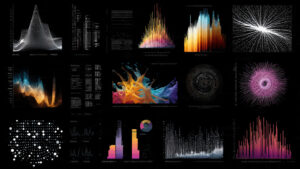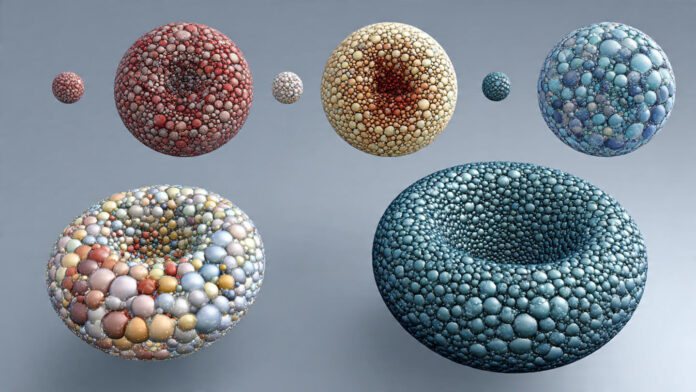Introduction
Pebble convex sounds simple at first, but it’s one of those ideas in computational geometry that gets more fascinating the deeper you go. Mathematicians, computer scientists, and pretty much anyone who’s into shapes and spaces have spent ages turning this over in their minds. Once you start digging into pebble convex sets, the way you look at boundaries and shapes shifts. You start to question what convexity even is.It’s a small idea that opens big doors.
What Is Pebble Convex?
Pebble convex is basically a looser take on regular convexity. With classic convex sets, if you pick any two points inside the set, the line between them always stays inside the set no exceptions. Pebble convex bends that rule a bit. It lets you have small, bumpy areas think of the uneven surface of a pebble where the set isn’t perfectly smooth or strictly convex. People started talking about pebble convexity because sometimes shapes are nearly convex, but tiny imperfections or rough spots keep them from fitting the usual definition. Pebble convex gives us a way to talk about and study those “almost convex” shapes without tossing them out just because of a few minor flaws.
“Pebble convex” makes you think of those smooth stones you find by a river at first, they just look round and simple. But when you really look, you see all these little bumps and dents. Still, nothing too wild. The shape never dives in or caves out so much that it stops feeling basically convex. The trick with pebble convex shapes is recognizing how math lets us handle these small, real-world flaws without losing the structure and discipline that analysis needs. It’s about seeing the beauty in the details without letting them take over.
The Mathematical Foundation of Pebble Convex

To really pin down what pebble convex means, you need to set some rules about how much a shape can stray from being perfectly convex. Mathematicians usually say a set is pebble convex if you can write it as a convex set that’s been tweaked a bit, but not too much there are clear limits. These limits cover things like how deep the dents go, how often the boundary wiggles, or just how far the whole shape drifts from its convex hull.
Pebble convexity stands out because it’s flexible. Instead of forcing shapes into strict categories convex or not it recognizes that convexity isn’t always all or nothing. That is a big deal when you are looking at things in nature, real world objects, or even computer models. Perfect convexity sounds nice on paper, but out in the real world, it almost never happens. Pebble convexity gives you a way to handle those in between cases.
When researchers look at pebble convex shapes, they usually use something called an epsilon value. Basically, epsilon sets the limit for how much a shape can stray from being perfectly convex. If you can fix all the non-convex parts of a shape by making tweaks that are no bigger than this epsilon, then the shape counts as epsilon pebble convex. This way of thinking helps keep things exact for math, but it still works in real world situations.
Applications in Computer Science
Pebble convex has made a real difference in computer science, especially when it comes to shape recognition, image processing, and all those computational geometry algorithms. Think about how computer vision systems work they almost never see perfectly convex shapes in the wild. Buildings come with all sorts of quirky details, nature throws in its own odd bumps and curves, and even machines can’t produce things without a few slight variations. Pebble convex gives algorithms a way to handle these imperfections, letting them classify and analyze shapes without getting tripped up by every little irregularity.
When it comes to robotics and path planning, pebble convex spaces give engineers a real edge. Picture a robot trying to make its way through a room it needs to spot obstacles and figure out where it can actually move. If you treat almost convex areas as pebble convex, you speed up the math and save time, but you still keep things safe. The robot can make smart guesses about these spaces, which means everything runs smoother without losing any key features.
Pebble convex concepts have a real impact in computer graphics and 3D modeling. When working with complex surfaces or aiming to simplify a mesh for better efficiency, viewing certain areas as pebble convex helps algorithms figure out which features are essential and which can be left out. It’s about striking the right balance making the visuals appealing without overloading the system. This matters a lot when you need everything to operate quickly and smoothly in real time.
Pebble Convex in Optimization Problems
Optimization theory is another field where pebble convex proves especially useful. Many optimization problems involve convex objective functions or constraint sets because convexity simplifies matters ensuring, for example, that any local optimum is also a global one. However, in practical situations, things are rarely that tidy. Functions are frequently nearly convex, but not entirely. By treating these as pebble convex, you can still apply much of the standard convex optimization toolkit, with just a few adjustments. This approach allows researchers to achieve strong results even when perfect convexity isn’t present.
Pebble convex functions have led researchers to develop stronger optimization algorithms ones that don’t break down when faced with complications. These algorithms come equipped with built in safeguards and smart adjustments, allowing them to deal with the oddities and challenges present in real world pebble convex situations. Engineers use these approaches in machine learning, operations research, and economic modeling, precisely because they perform reliably when theory encounters the unpredictability of reality.
Geometric Measure Theory and Pebble Convex
Pebble convex sets raise many intriguing questions in geometric measure theory. Mathematicians investigate aspects like their size, shape, and the arrangement of their boundaries and interiors. They are interested in what happens to these sets when they are moved or altered in different ways. And the central question remains: how does the “pebbleness” of a set affect its geometry? There is still much to explore in this area.
As you dig into these theories, you begin to notice odd connections forming between ideas that initially seem unrelated. For instance, pebble convex has intersected with fractal geometry, demonstrating how those repeating, self similar patterns can relate to our understanding of convexity. At times, it even draws from ergodic theory, exploring how adding some randomness to convex sets results in new pebble convex forms. Each time these areas overlap, it provides a deeper insight into what pebble convex actually is, and honestly, it just expands our overall knowledge of geometry.
Practical Examples and Visualizations

If you want to understand what pebble convex means, it is useful to check out some actual examples Imagine a round disk with a couple of small dents on its edge. It still mostly looks like a circle mainly convex but those little dips interrupt the perfect outline. Another example: picture a rectangle with slightly rounded corners and a few tiny notches on its sides. With the right conditions, that counts as pebble convex too.
Pebble convexity is a common feature of natural objects. As the name implies, real pebbles from a riverbed usually exhibit this characteristic. Although erosion has smoothed their surfaces into rounded shapes, a close inspection shows small pits, grooves, and irregularities. Pebble convex, largely rounded fruits with stem indentations and surface texture variations include apples and oranges.
Computational Challenges
Figuring out if a set is pebble convex isn’t as straightforward as checking for strict convexity. With strict convexity, you’ve got solid, efficient algorithms. But pebble convex? That’s trickier. You need to take a close look at how non-convex parts show up and how big they are. Some researchers have come up with approximation algorithms they can usually tell you if a shape is pebble convex, and they’re pretty reliable. Still, if you want an exact answer, especially for more complicated shapes, get ready for some heavy computational work.
Researchers are still trying to crack the code on efficient pebble convex detection algorithms. It’s a balancing act getting solid accuracy without burning too much computing power. The goal? Build tools that can handle huge datasets or tackle high dimensional spaces without taking forever. Most of the time, they rely on smart sampling techniques. By looking at a handful of key points, they figure out the bigger picture when it comes to a pebble’s convexity.
Future Directions
Pebble convex research is heading in some exciting directions. In machine learning, as models get smarter, weaving pebble convex constraints right into neural networks can actually make training smoother and help them generalize better. Over in materials science, digging into the pebble convex traits of molecules opens doors for breakthroughs in nanotech and drug design. And for urban planning, using pebble convex analysis gives planners new ways to design cities that stay organized but still adapt naturally to the land underneath.
Pebble convex stands out because it blends different fields so well. You see it everywhere physicists use it to describe real world stuff, computer scientists lean on it for tricky problems, and mathematicians dig into its theory just for the fun of it. What makes pebble convex really useful is how it handles “almost convex” shapes, not just the perfect ones. Researchers love it because they don’t have to pick between real world messiness and neat mathematical ideas they get both. That’s why pebble convex sticks around.
Conclusion
Pebble convex takes the old idea of convexity and pushes it further. It’s clever but still feels pretty straightforward once you get the hang of it. For anyone digging into nearly convex shapes or complicated spaces, this approach really opens doors. Researchers and folks in all sorts of fields use it to solve problems that standard convexity just can’t handle.




